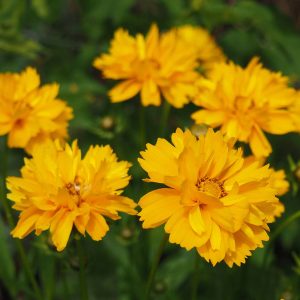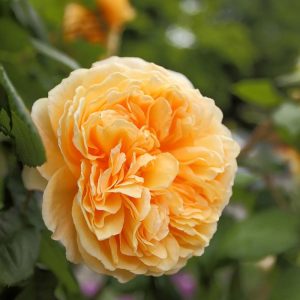Description
Foxgloves, also known as Digitalis, are tall and stately biennial plants that add a charming cottage garden feel to any landscape. They produce towering spikes of trumpet-shaped flowers in a range of colors, from soft pinks and creams to deep purples and blues, with spotted or solid throats. Foxgloves pair well with other classic cottage garden plants such as roses, lavender, delphiniums, and peonies. Their height and vertical interest make them a great addition to the back of a border, while their delicate flowers add a whimsical touch to any garden. Foxgloves prefer partial shade and well-draining soil, and can also be grown as a short-lived perennial with proper care.
Key Facts
- Common Name(s):Foxglove ‘Foxy Group’
- Hardiness:Fully hardy through most of the UK
- How big will I get? Digitalis purpurea ‘Foxy’ can grow to a height of 1m and a spread of 0.5m.
- Did You Know That:The name Digitalis comes from the Latin for finger, due to the similarity of the flowers to a thimble.
Plant Calendar
A rough guide to how this plant will change through the year.
| Jan | Feb | Mar | Apr | May | June | July | Aug | Sept | Oct | Nov | Dec | |
| Flowering Time |  |
 |
||||||||||
| Foliage Colour |  |
 |
 |
 |
 |
 |
 |
 |
 |
 |
 |
 |
| J | F | M | A | M | J | J | A | S | O | N | D |
 |
 |
||||||||||
 |
 |
 |
 |
 |
 |
 |
 |
 |
 |
 |
 |
Care Guide

Soil Requirements
Digitalis purpurea ‘Foxy’ is a versatile plant and can cope with wet or drier soils, but prefers there to be decent drainage. This plant can grow in soil with a wide range of pH levels, it is not picky about the pH level of the soil.

Best Position
Digitalis purpurea ‘Foxy’ can handle either an exposed or a sheltered position and can cope with either full sun or partial shade.

Maintenance
Digitalis purpurea ‘Foxy’ will benefit from deadheading after it finishes flowering this will help the plant by redirecting energy from seed production to flower and root production.

Pest, Diseases and Wildlife
Digitalis purpurea ‘Foxy’ can have problems with aphids, it can be vulnerable to certain diseases such as leaf spot and powdery mildews. It is also known to attract bees and butterflies. It is toxic to cats, dogs, horses and people.





